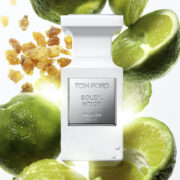Sunlight and Testosterone: It seems basking under the sun gives more than a sexy tan

A research from Austria published in the journal of Clinical Endocrinology linked exposure to sunlight with increased libido and fertility. The researchers tracked 2,299 men for one year and found out that increased exposure to sunlight increased their testosterone production by as much as 69%, confirming previous reports that even just one hour of sunlight exposure can boost testosterone levels. Testosterone is the male hormone that is responsible for sexual drive, erection, sperm production, and muscle and bone strength.
The connection appears to be mediated by the increased production of Vitamin D. Vitamin D is technically not a vitamin but a steroid hormone. It regulates the metabolism of other vitamins and body functions. Ninety percent of Vitamin D in the body is produced in the skin upon exposure to sunlight. The rest may be obtained from fish oil and meat. Scientists recommend at least 15 minutes of direct sun on their face and hands on a daily basis for light skinned people, to as much as 45 minutes for those with darker skin.

OTHER BENEFITS OF VITAMIN D
There are a lot of studies now that show that the role of Vitamin D goes beyond the development and maintenance of healthy bones. It also helps boost the immune system and prevent the development of chronic diseases. There are evidences that Vitamin D can help manage weight, alleviate arthritic pain and muscle cramps, hasten the resolution of upper respiratory tract infections, reduce the risk for dementia, manage schizophrenia, and decrease the risk for multiple sclerosis.
Vitamin D is also getting a lot of attention now for its ability to reduce breast cancer risk. An article published by Harvard Medical School said that risk reduction for breast cancer was as much as 77%. Significant results by other researchers showed similar effects for cancers of the colon, pancreas, prostate, and ovaries have also been noted.

SUNSCREENS
The time it takes for the body to synthesize all the Vitamin D it needs is just a fraction of the time it takes to get sunburned. The views on the use of sunscreen are conflicting. Some experts say that the same ultraviolet (UV) radiation that is supposed to trigger Vitamin D synthesis is the cause of skin cancer so they recommend using sunblock. Others claim that Vitamin D actually protects people from skin cancer and that sunscreens prevent its synthesis. They cite a study that showed that lifeguards in Australia had the lowest amounts of skin cancer owing to their almost constant exposure to direct sunlight. In another study in England, researchers found out that the highest rate of skin cancer was seen among office workers who rarely got exposed to the sun. Other studies seem to refute the claim that UV radiation causes skin cancer since a significant number of skin cancers are found on skin that is never exposed to the sun. They even go further so say that sunscreens themselves cause cancer.
In 2011, a clinical report in the Journal of the American Board of Family Practice concluded that the incidence of skin cancer continues to increase in the U.S. at 3% annually despite decades of sunscreen use; that there is currently little evidence that sunscreens are protective against skin cancer; and that several studies suggest that the use of sunscreen does not significantly decrease and may even increase the risk for skin cancer and sunburn.
PROTECTING YOURSELF THE NATURAL WAY.
If you want to prevent sunburn without sun block, be sure to load up on tomatoes, berries, grape seed oil, and berries. Salmon also helps. They are rich in substances that naturally protect the skin from harsh heat. Take frequent but short exposures. The recommendation is to have intervals of 15 minutes between the sun and the shade. Wear a visor or a hat to provide shade for the face. Try to avoid the sun from 11am to 2pm.
Writer: Dr. Jason Peñarnda
This article was originally published on Garage Magazine May 2012
Image from Unsplash










